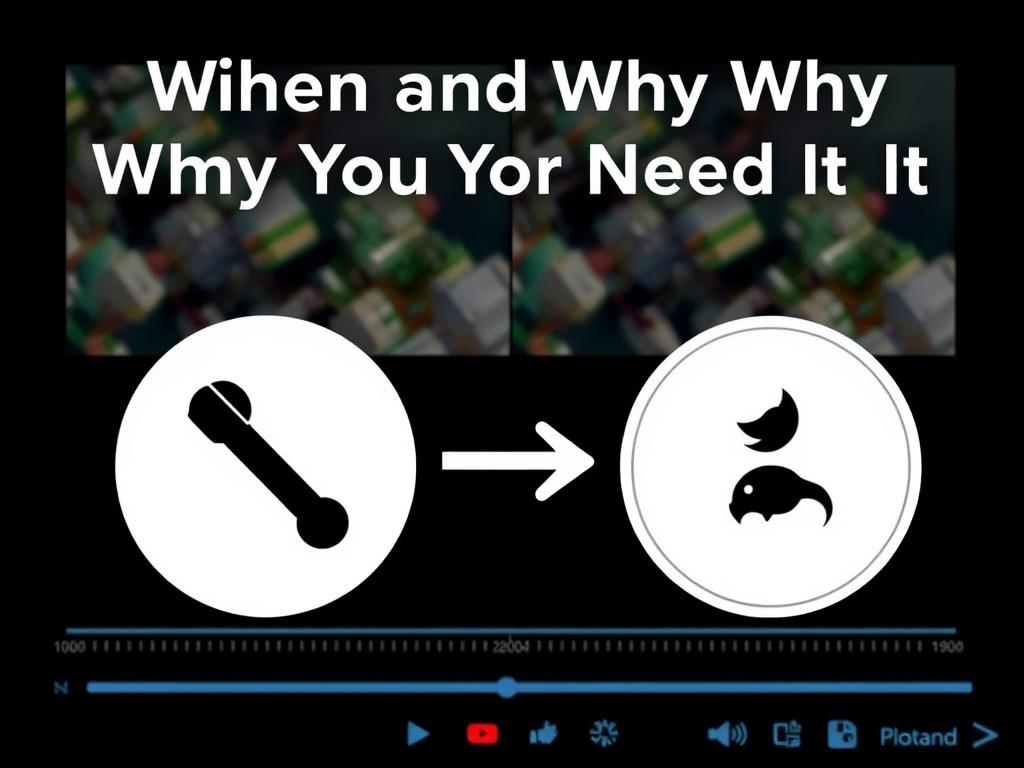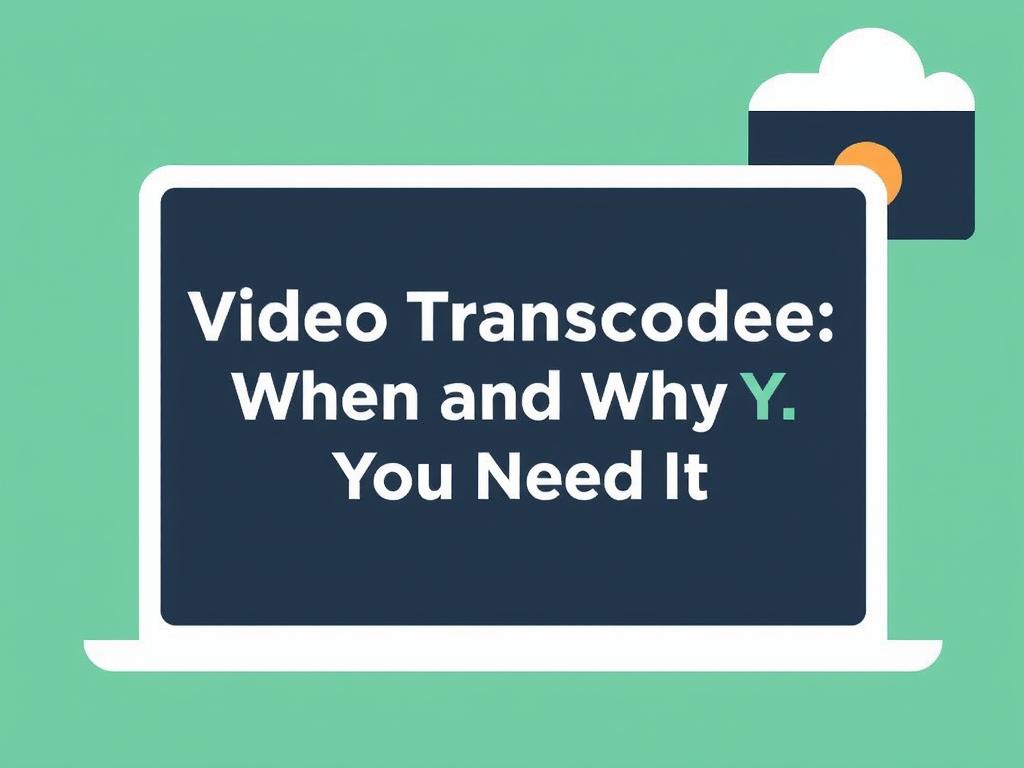In today’s digital world, video content is everywhere—from social media and streaming services to professional broadcasting and online courses. But have you ever wondered why the same video might play flawlessly on your phone yet struggle on your older laptop or fail to upload on some platforms? The answer often lies in a crucial process called video transcoding. Whether you’re a content creator, a developer, or simply someone curious about technology, understanding video transcoding is essential. It ensures that video files are playable across different devices, networks, and platforms while maintaining optimal quality and size. In this article, we’ll explore what video transcoding is, when you need it, and why it’s so important in the modern digital landscape.
What Is Video Transcoding?
At its core, video transcoding is the process of converting a video file from one format to another. This involves decoding the original video and then encoding it again into a new format, often with different settings for resolution, bitrate, codec, or container. Think of transcoding like translating a book from one language to another. The story remains the same, but the way it’s presented changes to suit a different audience.
There are several reasons why a video might need to be transcoded. For example, a video shot in high-definition might be transcoded to a lower resolution to save storage space or to upload faster on sites with bandwidth limits. Alternatively, a file might need to be transcoded to a different codec that’s compatible with certain devices or software. In essence, transcoding is about ensuring accessibility and optimizing playback quality depending on where and how the video will be used.
Common Video Formats and Codecs
Understanding the need for transcoding often starts with familiarity with video formats and codecs. Here are some of the most popular ones:
| Format/Container | Common Use | Typical Codecs Used |
|---|---|---|
| MP4 | Streaming, social media, general playback | H.264, H.265, AAC audio |
| AVI | Older videos, some professional editing | DivX, Xvid, uncompressed |
| MKV | High-definition, Blu-ray rips | H.264, H.265, VP9 |
| WEBM | Web streaming (especially YouTube) | VP8, VP9, Opus audio |
Because each device and platform supports different combinations of these formats and codecs, transcoding is necessary to make sure videos can be played back correctly everywhere.
When Do You Need Video Transcoding?
Video transcoding isn’t always necessary. If you’re watching a video on a device directly compatible with its format and codec, you probably won’t notice any issues. But here are some common situations where video transcoding becomes important:
- Device Compatibility Issues: You might have a video that plays perfectly on your computer but won’t open on your smartphone. Transcoding can convert it to a device-friendly format.
- Reducing File Size: Large video files can be impractical to upload or stream, especially on slower internet connections. Transcoding can lower the resolution or bitrate without sacrificing too much quality.
- Broadcast and Streaming Platforms: Many platforms require specific video formats and settings. Videos need to be transcoded to meet these standards before uploading.
- Editing and Post-Production: Sometimes, files need to be transcoded into a format that editing software can handle better for smoother workflows.
- Archiving and Compatibility: Older video files can become obsolete as codecs and formats change. Transcoding them into current standards helps preserve them long-term.
Real-World Examples of Video Transcoding
To bring this to life, here are some concrete examples of when transcoding matters:
- Streaming Services: Netflix, YouTube, and Amazon Prime Video all rely on transcoding to deliver videos put into several different qualities and formats optimized for various devices and internet speeds.
- Social Media Sharing: Platforms like Instagram and Facebook often require uploading videos in particular formats or with size limits, which triggers automatic transcoding during upload.
- Professional Broadcasting: TV stations and live broadcasters transcode incoming footage to match their broadcast standards and bandwidth constraints.
Why Is Video Transcoding Important?
Beyond simply playing videos, transcoding addresses several challenges in the digital video ecosystem. Let’s break down some of the key benefits:
| Benefit | Explanation |
|---|---|
| Device and Platform Compatibility | It ensures videos work on a wide array of devices and platforms, so viewers don’t encounter playback errors. |
| Efficient Bandwidth Usage | Smaller, optimized files reduce buffering and lower data costs, especially important for mobile users. |
| Optimized Quality | Allows adjustment of resolution and bitrate to achieve the best balance between quality and file size. |
| Future-Proofing Content | Transcoding to current standards makes older videos accessible on newer devices and software. |
| Simplifies Uploading and Sharing | Ensures videos meet platform specifications without user intervention, making sharing seamless. |
Distinguishing Between Transcoding, Transrating, and Transmuxing
While “video transcoding” is a commonly used term, it often overlaps with related processes like transrating and transmuxing. Let’s clarify:
- Transcoding: Decoding and re-encoding video into a new format or codec, often changing resolution or bitrate.
- Transrating: Adjusting only the bitrate (sometimes resolution) of the video while keeping the same codec and format.
- Transmuxing: Changing the container format without re-encoding the video or audio streams (for example, from MKV to MP4), which is faster but less flexible.
In practical use, transcoding covers the most significant changes necessary for broader compatibility and optimization.
How Do You Transcode Videos?

Transcoding can be done through a variety of tools and software—ranging from simple desktop applications to complex cloud-based services. Here are some popular options:
- FFmpeg: A powerful open-source command-line tool commonly used for transcoding, converting between formats, and much more.
- HandBrake: An easy-to-use desktop application that allows users to convert videos into different formats with adjustable parameters.
- Cloud Services: Platforms like AWS Elemental MediaConvert or Zencoder provide scalable transcoding solutions tailored for businesses.
Many of these tools offer presets tailored for specific device types or platforms, simplifying the transcoding process for beginners.
Key Parameters in Video Transcoding

When transcoding, several parameters come into play that influence the output video’s size, quality, and compatibility. Here are the major ones:
| Parameter | Description | Effect on Output |
|---|---|---|
| Codec | The algorithm used to compress and decompress the video stream | Determines compatibility and compression efficiency |
| Container Format | The file format that holds the video, audio, and metadata | Impacts which players can open the file |
| Resolution | The number of pixels in the video frame (e.g., 1920×1080) | Higher resolution means better clarity but larger files |
| Bitrate | Amount of data processed per second, usually measured in kbps or Mbps | Higher bitrate generally means better quality and larger file size |
| Frame Rate | Number of frames per second (fps) | Affects smoothness of motion and file size |
Challenges and Considerations in Video Transcoding

Despite its importance, video transcoding has some challenges. For one, transcoding can be resource-intensive, requiring significant CPU or GPU power, especially for large files or high resolutions. This can make on-demand transcoding slow or costly without specialized hardware or cloud support.
Another consideration is maintaining quality. Each time a video is transcoded, particularly when lossy codecs are involved, there can be a loss of quality. Balancing between reducing file size and preserving visual fidelity is a constant challenge. Additionally, ensuring that subtitles, metadata, and multiple audio tracks remain intact requires attention during transcoding workflows.
Future of Video Transcoding
Technology continues to evolve rapidly. Emerging video codecs like AV1 promise much better compression and quality, which means transcoding will be essential to adopt these modern formats while maintaining backward compatibility. Additionally, AI-driven transcoding and real-time adaptive streaming techniques are improving how video is delivered and optimized for every kind of viewer.
Summary Table: When to Use Video Transcoding
| Scenario | Reason to Transcode | Outcome |
|---|---|---|
| Uploading to a social platform | Platform requires a specific format or max filesize | Smooth upload and playback without errors |
| Playing video on a mobile device | Device does not support original codec or resolution | Video plays correctly and efficiently |
| Editing video footage | Original format not compatible with editing software | Smoother editing process |
| Reducing file size for archiving | Save space without losing too much quality | Smaller files easier to store and manage |
Conclusion
Video transcoding is a fundamental part of working with video content in today’s digital age. Whether it’s for improving compatibility, optimizing file size and quality, or meeting platform requirements, transcoding ensures that videos can be viewed and shared seamlessly across a multitude of devices and networks. While it comes with certain technical challenges, the benefits in terms of accessibility, user experience, and content longevity are undeniable. As video continues to grow in importance, understanding when and why you need video transcoding puts you in control of your media and helps you deliver the best possible experience to your audience.